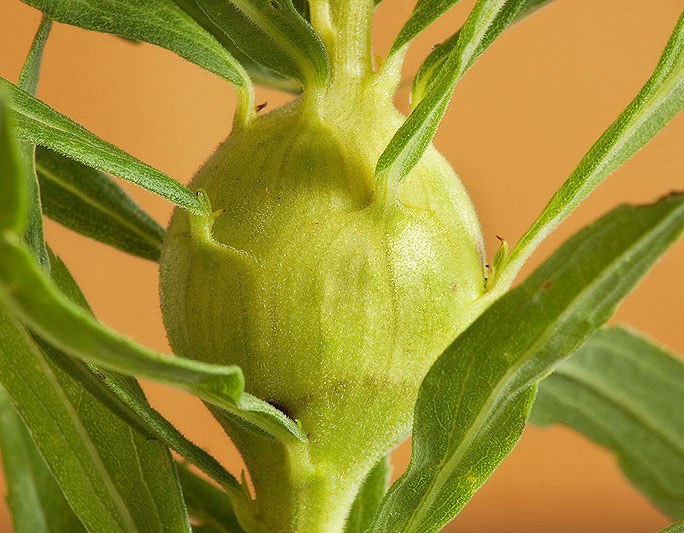Posted: April 8, 2019
This is the 4th of eight short news articles written by students, during the professional development class, about each other's research.
Plants that can smell?
By Nina Dennington
Most people assume plants are immobile and defenseless but imagine if they had a nose that allowed them to smell an incoming attacker. Tall goldenrod does not technically have a nose, but it is able to detect the presence of one of its attackers, the goldenrod gall fly.
Graduate student Julie Golinski in John Tooker's lab at Penn State is studying the interaction between goldenrod and goldenrod gall fly, and in particular is trying to understand why different varieties of tall goldenrod respond differently to the same pheromone. She said "People tend to overlook these roadside weeds but they are actually very perceptive and can vary in how they respond to their surroundings. In a single field one tall goldenrod variety could have an entirely different reaction to a gall fly when compared to its neighbor."
Male goldenrod gall flies emit pheromones to attract their mates. A tall goldenrod plant can detect these pheromones, and take steps to protect itself against attack by the gall fly. Some of these steps include producing chemicals that make the plant less tasty for insects to eat, which can then protect it from many other insects. However, similar to how people respond differently to bee stings - some may just get a welt while others may go into anaphylactic shock - tall goldenrod varieties have different levels of response to gall fly pheromone. Golinski is studying how variation in goldenrod responses to gall fly influences our understanding of the evolution of goldenrod defense strategies and the associated trade-offs.
Tall goldenrod is native to North America and its interactions with the goldenrod gall fly create a perfect model for understanding how plants adapt to their attackers since they have evolved together for so long. Golinski also hopes to use the information from this experiment to study other systems in agriculture and better understand native plant evolution. Working with collaborators, she'll use other native North American crops such as cranberry and blueberry to see if they have a similar response to the sex pheromones of their own native pests.
Golinski's work is showing how very responsive plants are to the other animals in their surroundings. So next time you're smelling a plant, just remember that it could be smelling you too!


